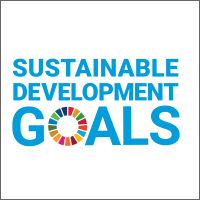SOCIAL PRACTICE
All years
2025
2024
2023
2022
2021
2020
2019
2018
2025
2024
2023
2022
2021
2020
2019
2018
|
Sep 02, 2020
USR between Ages Education Project
Arrange at least two different generations of people to take note of their interaction. By sharing the views, experiences, and skills from each other, the youth can learn the knowledge and experience from the elderly. The youth can also plan the lessons to help the elderly with future life after aging.
|
Aug 29, 2020
International Bamboo Architecture Design Competition
Bamboo Architecture competitions theme was to explore bamboo as a sustainable green material. The competitions aim to unite international expertise and knowledge in the aim of cross-cultural professional exchanges.
|
Aug 27, 2020
Bamboo Market of Economy
The Forum focuses on bamboo economy trend and invites bamboo professionals to analyze on global bamboo market development which are related to SDGs issues and products.
|
Aug 27, 2020
International Bamboo Photography Competition for Elementary School Students
The competition’s theme was ‘Bamboo for Sustainable Development. The Brief of the competition was to photograph a picture that reflects the culture of using bamboo in our homes and our lifestyle. It was divided into junior category which consisted of 6 to 8 grade students while the senior category consisted of 9 to 12 grade students.
|
Aug 01, 2020
Does Public Participation Achieve Social Equity? An Analysis of Revitalization of Environmentally Vulnerable Rural Communities in Taiwan
<p><span style="color:hsl(0,0%,0%);">The theory of Pluralist Democracy posited that public participation help achieve</span></p><p><span style="color:hsl(0,0%,0%);">social equity. The purpose of this research is to examine the relations between</span></p><p><span style="color:hsl(0,0%,0%);">public participation and social equity in the context of rural revitalization policy</span></p><p><span style="color:hsl(0,0%,0%);">processes in the environmentally vulnerable villages. The theory of Pluralist</span></p><p><span style="color:hsl(0,0%,0%);">Democracy contended that the public interest can be developed through dialogue</span></p><p><span style="color:hsl(0,0%,0%);">among diverse interests. Accordingly, the public interest-oriented policy can be</span></p><p><span style="color:hsl(0,0%,0%);">formulated and social equity can therefore be reached. This argument has made</span></p><p><span style="color:hsl(0,0%,0%);">public participation crucial in the democratic society. However, the characteristics</span></p><p><span style="color:hsl(0,0%,0%);">of rural villages formed barriers for villagers participation in public affairs. Does</span></p><p><span style="color:hsl(0,0%,0%);">social equity become unachievable dream for such villages? How can the</span></p><p><span style="color:hsl(0,0%,0%);">relations between public participation and social equity be redefined in the rural</span></p><p><span style="color:hsl(0,0%,0%);">villages? Through field observations, in-depth interviews, and questionnaire</span></p><p><span style="color:hsl(0,0%,0%);">surveys, this research intends to investigate the relations between public</span></p><p><span style="color:hsl(0,0%,0%);">participation and social equity in the formulation and implementation processes of</span></p><p><span style="color:hsl(0,0%,0%);">revitalization programs in the 12 environmentally vulnerable villages in Chiayi</span></p><p><span style="color:hsl(0,0%,0%);">County, Taiwan. This study extends the investigation to the three factors affecting</span></p><p><span style="color:hsl(0,0%,0%);">public participation, that is, natural environmental pressure, revitalization</span></p><p><span style="color:hsl(0,0%,0%);">approach, and government s recognition of public participation. This research</span></p><p><span style="color:hsl(0,0%,0%);">expects to initiate a theoretical dialogue with the theory of Pluralist Democracy,</span></p><p><span style="color:hsl(0,0%,0%);">Deliberative Democracy, and Public Participation by providing rural-village</span></p><p><span style="color:hsl(0,0%,0%);">specific insights. Practically, this study intends to provide grassroots policy</span></p><p><span style="color:hsl(0,0%,0%);">recommendations to regional revitalization policy formulation recently promoted</span></p><p><span style="color:hsl(0,0%,0%);">by Taiwan s government.</span></p>
|
Aug 01, 2020
E-learning Outcome
<p><span style="color:rgb(0,0,0);">With the support and guidance from the Ministry of Education and government agency, CCU has upgraded school e-learning and developed many e-learning courses for intramural and extramural.</span></p>
|
May 29, 2020
Self-Understanding, Create Equality
<p>According to the objective of 3-2《self-understanding, create equality》, Higher Education Sprout Project, which aims to understand different groups and achieve the goal of actual inclusiveness and equal cultural rights between groups through the conversations and discussions of the forum. By gradually delve into the issues and raise questions, teachers can make students reflect deeper and through open discussions, to exchange their ideas and arouse the talks and concussion of minds, while understanding more about group related issues. </p>
|
May 21, 2020
Local Road Tree Reservation Issues for Peace, Justice and Strong Institutions
To promote UN SDG 16 goal for,Have written policies and procedures to identify local stakeholders external to the university and engage with them,National Chung Cheng University has gone into partnership with the following association. <p></p>
|
May 20, 2020
2020 Chat with the Principal for Peace, Justice and Strong Institutions
To promote UN SDG 16 goal for,Provide a neutral platform and ‘safe’ space for different political stakeholders to come together to frankly discuss challenges,National Chung Cheng University has organized the following workshop. <p></p>
